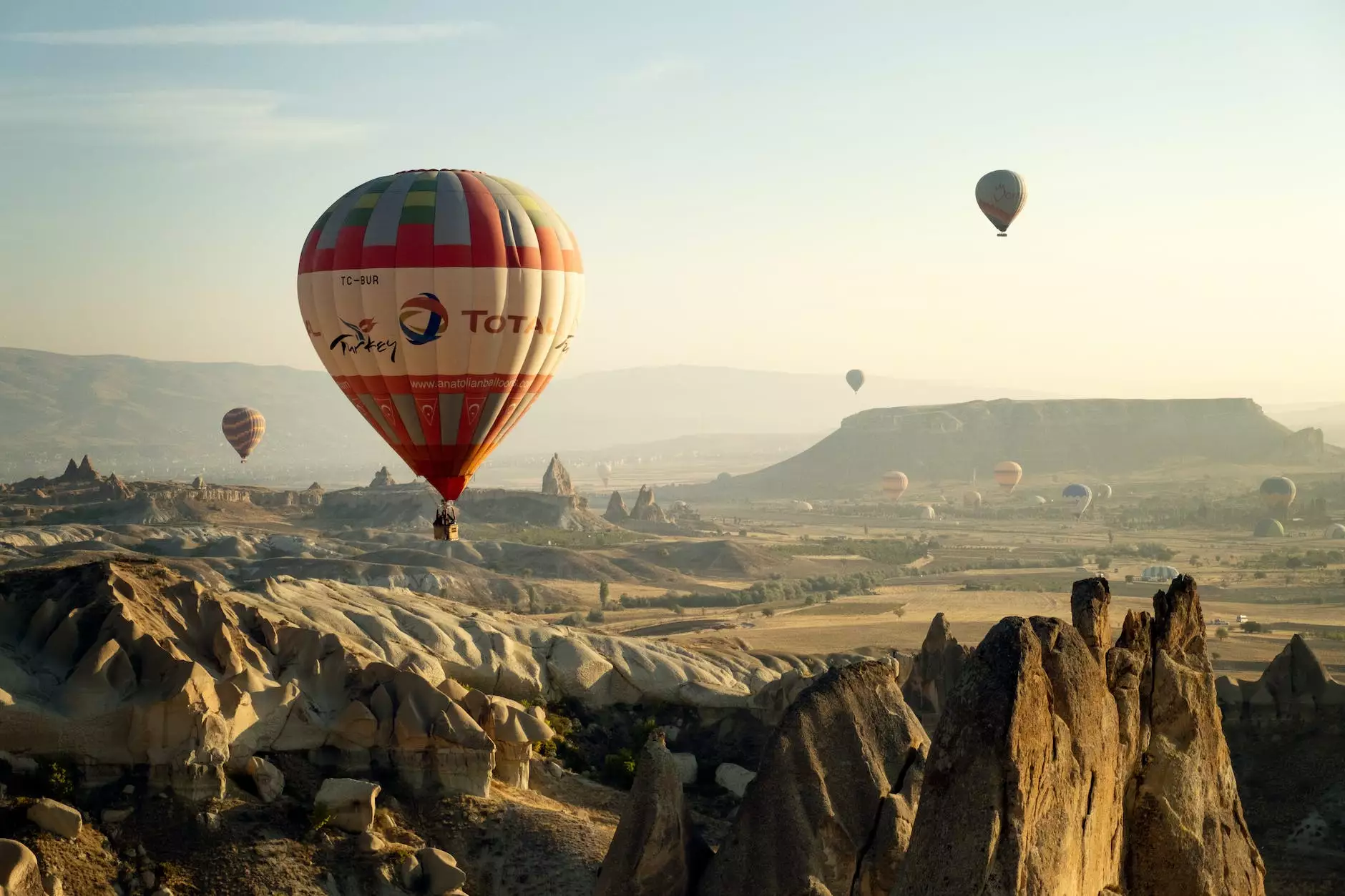25 Things to Know Before Flying a Drone

Introduction
Flying a drone can be an exciting and rewarding experience. Whether you are a hobbyist or a professional photographer looking to capture stunning aerial shots, it's important to understand the guidelines and best practices for safe and responsible drone operation. In this article, we will discuss 25 essential things you need to know before taking your drone for a spin.
1. Familiarize Yourself with Drone Regulations
Prior to flying a drone, it's crucial to familiarize yourself with the regulations set forth by the Federal Aviation Administration (FAA) or the governing body in your country. Understand the restrictions on airspace, maximum altitude, and any specific rules related to recreational or commercial drone use.
2. Register Your Drone
In many jurisdictions, drones weighing over a certain limit need to be registered. Make sure to comply with the registration process and affix the registration number to your drone for identification purposes. Failure to register your drone may lead to legal consequences.
3. Learn about No-Fly Zones
It's important to be aware of designated no-fly zones, such as airports, military bases, and other restricted areas. Familiarize yourself with interactive maps or smartphone applications that highlight these zones to avoid any potential conflicts or endangerment of others.
4. Assess Weather Conditions
Prior to launching your drone, always check the weather forecast. Avoid flying in strong winds, rain, or foggy conditions, as it may affect the stability and control of your drone. Also, take into consideration the temperature range in which your drone can safely operate.
5. Pre-flight Checklist
Develop a pre-flight checklist to ensure you have all the necessary items and that your drone is in optimal condition. Inspect the battery life, propeller integrity, camera settings, and connectivity between the remote controller and drone. This will help minimize any potential technical issues during flight.
6. Flights in Line of Sight
For safety reasons and compliance with regulations, it's best to maintain visual contact with your drone at all times during the flight. Avoid flying beyond your line of sight, as it increases the risks of losing control or colliding with obstacles. If your drone supports it, enable the return-to-home feature for added security.
7. Respect Privacy
When flying a drone, respect the privacy of others. Avoid capturing footage or images of individuals without their consent, especially in private spaces. Be mindful of your surroundings and take into account the expectations and sensitivities of the community in which you are operating your drone.
8. Learn Basic Drone Maneuvers
Take the time to practice basic drone maneuvers, such as takeoff, landing, hovering, and basic flight controls. Understanding the capabilities of your drone and becoming familiar with its flight characteristics will help you navigate more confidently and safely.
9. Stay Updated on Drone Technology
Drone technology is continually evolving. Stay updated on the latest advancements, firmware updates, and safety features available for your drone model. Regularly check the manufacturer's website and online communities for any relevant information or software upgrades.
10. Battery Management
Proper battery management is crucial for safe and efficient drone flights. Follow the manufacturer's guidelines for charging, storing, and maintaining the batteries. Always carry extra batteries to extend your flight time, but ensure they are stored safely and within the recommended temperature range.
11. Plan your Flights
Before taking off, plan your flights carefully. Identify the areas you want to explore or the shots you want to capture. Make note of any potential hazards, obstructions, or congested areas that could interfere with your flight. Having a flight plan helps streamline your operations and supports better risk management.
12. Observe Air Traffic
When flying a drone, it's essential to observe and be aware of other air traffic in the vicinity. Keep an eye out for manned aircraft, helicopters, or even other drones nearby. Maintain a safe distance and yield the right of way to other aircraft to avoid any potential collisions.
13. Use ND Filters for Aerial Photography
If you're using a drone for aerial photography or videography, consider investing in neutral density (ND) filters. ND filters reduce the amount of light entering the camera, allowing you to achieve more balanced and cinematic shots even in bright conditions. Experiment with different ND filter strengths to find the ideal settings for your shots.
14. Master the Art of Smooth Movements
To capture professional-looking footage, practice smooth drone movements. Avoid jerky or abrupt maneuvers by using gentle, gradual inputs on the control sticks. Smooth movements enhance the overall quality of the footage and create a more immersive viewing experience.
15. Understand Image and Video Settings
Take the time to understand the image and video settings on your drone. Experiment with different resolutions, frame rates, and color profiles to achieve the desired look for your footage. Learn about exposure, white balance, and other camera settings that can significantly impact the final output.
16. Learn about Airspace Classes
Gain knowledge about airspace classes and their restrictions. Understand the differences between Class A, B, C, D, and E airspace, and the associated requirements for flying a drone within each class. This knowledge will help you navigate airspace regulations more effectively.
17. Carry Safety Equipment
Always carry safety equipment with you. This includes a fire-resistant bag or container for your batteries, a fire extinguisher, and a first aid kit. In case of emergencies such as a battery fire or minor injuries, having these items readily available can help mitigate risks and ensure your safety.
18. Manage Expectations
While drones offer incredible capabilities, manage your expectations realistically. Understand the limitations of your drone's flight time, range, and payload capacity. Set achievable goals and outcomes for your flights, ensuring a positive and satisfying experience.
19. Post-processing and Editing
After capturing footage or images, explore post-processing and editing techniques to enhance the quality of your content. Crop, color correct, and apply other adjustments to create visually stunning and captivating shots. Experiment with different software tools and techniques to find your unique style.
20. Respect Wildlife and Natural Habitats
When flying a drone in nature, respect the wildlife and natural habitats. Avoid disturbing or intruding upon animals, nesting areas, or protected ecosystems. Fly at a safe distance and follow ethical guidelines to minimize any negative impact on the environment.
21. Insurance Coverage
Consider obtaining insurance coverage for your drone. Accidents can happen, and having insurance protects you financially in case of damages or liabilities. Research and compare different insurance options tailored specifically for drones to find the right coverage for your needs.
22. Join Drone Communities
To expand your knowledge and connect with fellow drone enthusiasts, consider joining online drone communities or local flying clubs. These platforms provide opportunities to learn from experienced pilots, share your work, and stay informed about industry trends and events.
23. Practice Emergency Procedures
Prepare for unexpected situations by practicing emergency procedures. Learn how to perform a manual landing in case of a drone malfunction or loss of signal. Understanding these procedures can help prevent accidents and minimize any potential damages.
24. Learn about Drone Maintenance
Regular maintenance is essential to keep your drone in optimal condition. Clean the propellers, inspect the motors and electronic components, and replace any damaged parts promptly. Following the manufacturer's maintenance guidelines helps prolong the lifespan of your drone and ensures consistent performance.
25. Stay Up-to-Date with Local Regulations
Lastly, stay informed about any local regulations or restrictions that may apply to flying a drone in specific areas. Cities, parks, and public spaces may have additional guidelines or permits required for drone flights. Research and comply with these regulations to avoid any legal complications.
Conclusion
Flying a drone can be an incredibly rewarding experience, but it also comes with a great deal of responsibility. By understanding and following these 25 essential things to know before flying a drone, you can ensure a safe, enjoyable, and legally compliant flight every time. Remember, practice makes perfect, so invest the time and effort to become a skilled and responsible drone pilot.










